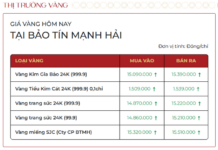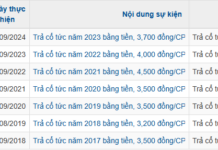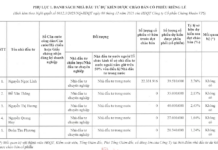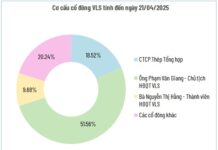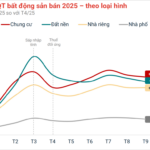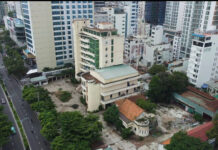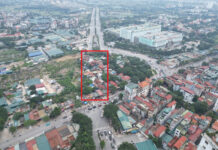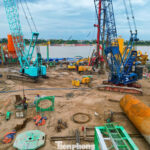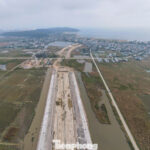The Ho Chi Minh City People’s Committee has submitted a proposal to Prime Minister Pham Minh Chinh and Deputy Prime Minister Tran Hong Ha, outlining a plan to connect Tan Son Nhat and Long Thanh airports via a railway system. This strategic transportation axis aims to facilitate passenger transfers in the near future.
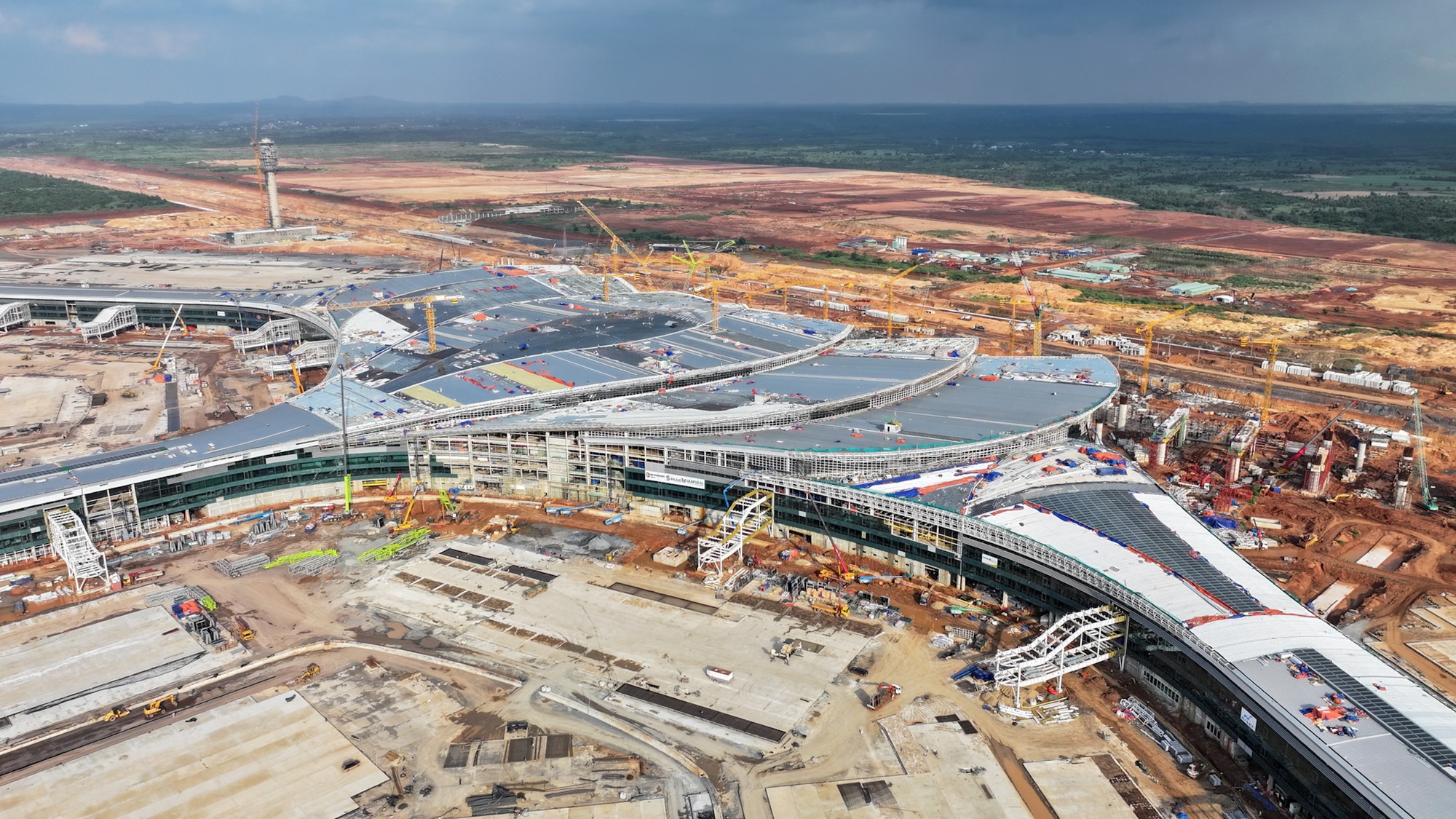
Long Thanh Airport has completed the installation of the main steel roof structure and canopy areas – Photo: NGUYEN TUAN
4 Connection Options Between the Two Airports
According to the Ho Chi Minh City People’s Committee, based on existing plans, connecting the two airports can be achieved through the urban railway network with four preliminary options.
Option 1 involves connecting via metro line 2 (Tham Luong – Ben Thanh, Ben Thanh – Thu Thiem) and the Thu Thiem – Long Thanh railway line. Passengers from Tan Son Nhat Airport will travel to Ba Queo station by metro line 2, then continue on the Thu Thiem – Long Thanh line to reach Long Thanh Airport.
Option 2 utilizes metro line 6 and the Thu Thiem – Long Thanh railway line. Passengers will travel from Tan Son Nhat Airport via metro line 6, then connect to the Thu Thiem – Long Thanh railway line at the Phu Huu junction to continue their journey.
Option 3 follows metro line 4 to Ben Thanh station, then transfers to metro line 2 (Ben Thanh – Thu Thiem section) and connects to the Thu Thiem – Long Thanh line.
Option 4 combines metro line 2 (Tham Luong – Ben Thanh), metro line 1 (Ben Thanh – Suoi Tien) extended through Dong Nai, metro line 2 of Dong Nai, and the Thu Thiem – Long Thanh railway line. Passengers from Tan Son Nhat will take metro line 2 to Ben Thanh station, then transfer to the extended metro line 1 through Dong Nai to connect with the Thu Thiem – Long Thanh railway line.
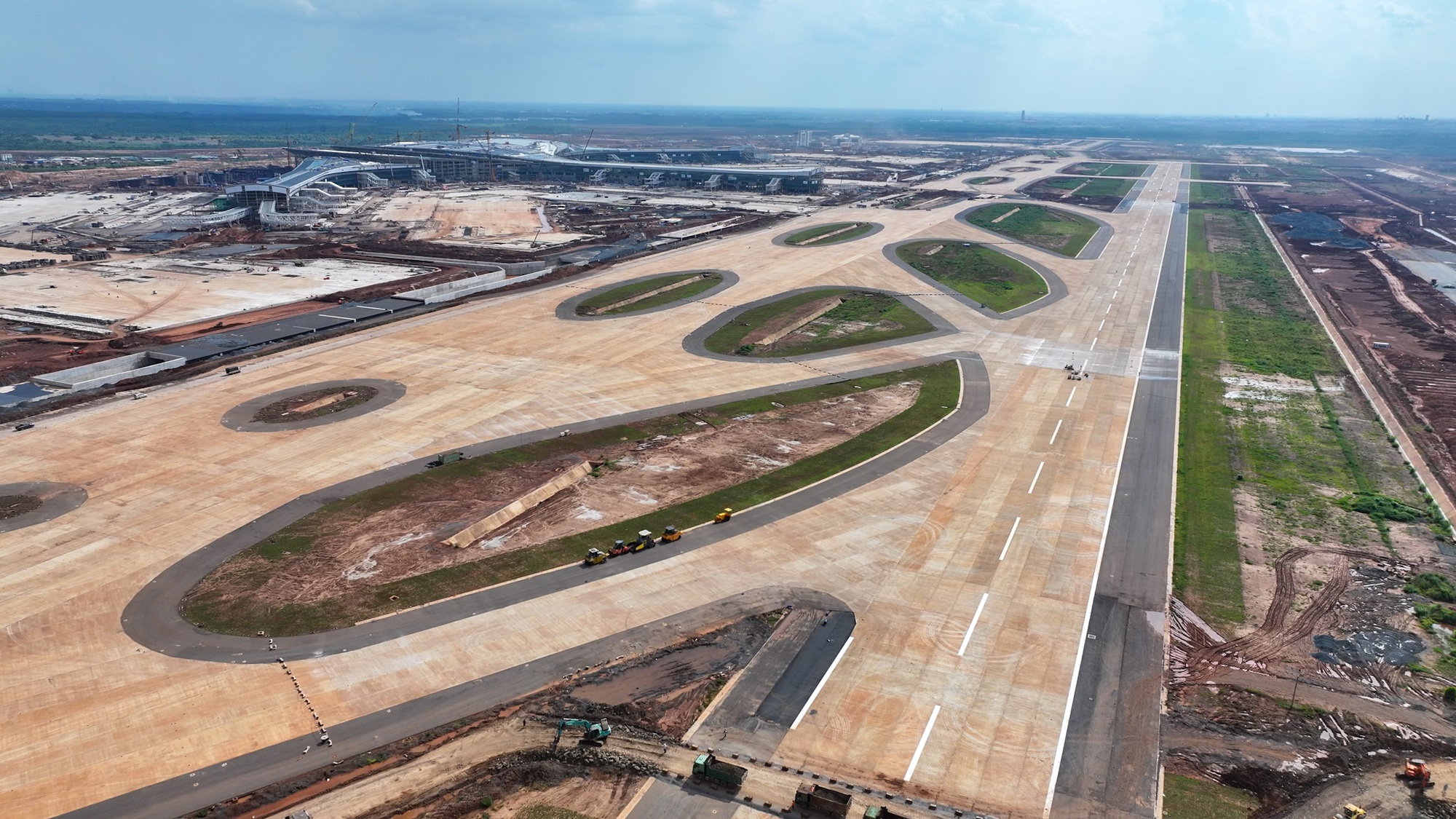
The runway has been essentially completed. In late September, Long Thanh Airport officially welcomed its first calibration flight
Most Feasible Option
The Ho Chi Minh City People’s Committee considers the connection via metro line 2 and the Thu Thiem – Long Thanh railway line as the most feasible and advantageous option for early implementation.
The Ben Thanh – Tham Luong section (approximately 12 km) of metro line 2 has completed land clearance and is expected to start construction in 2025, with completion before 2032. The area around Ba Queo station, which serves as a transfer point between Tan Son Nhat Airport and the metro, is being studied for expansion of major roads like Truong Chinh and Tan Ky – Tan Quy, with completion expected in 2029, facilitating passenger transfers.
The Ben Thanh – Thu Thiem section (approximately 6 km) is planned to run underground along Ham Nghi and Mai Chi Tho streets, minimizing land clearance and expediting construction. Meanwhile, the Thu Thiem – Long Thanh line follows the HCMC – Long Thanh – Dau Giay expressway corridor and Ring Road 3, mostly through vacant areas, allowing for swift implementation.
This railway axis has a significant advantage, directly connecting to the city center at Ben Thanh station, the intersection of metro lines 1, 2, 3, and 4.
Once metro line 6 is invested in and completed, it will pass through all three terminals (T1, T2, T3) of Tan Son Nhat Airport, connecting with metro line 2 at Ba Queo station and the Thu Thiem – Long Thanh line, creating an additional transportation corridor between the two airports and reducing pressure on the city center.
The Ho Chi Minh City People’s Committee will focus on accelerating this connection option, ensuring synchronized progress, infrastructure, and technical factors, while selecting modern technology capable of integration and future expansion. The city also proposes that the Prime Minister approve the priority acceleration of metro line 2 and the Thu Thiem – Long Thanh railway line, along with continued investment in metro line 6 to enhance connectivity.
According to the Vietnam Airport Corporation (ACV), Long Thanh Airport is expected to commence operations in 2026. At that time, if Tan Son Nhat handles all domestic flights (approximately 29.5 million passengers/year) and Long Thanh handles international flights (over 19 million passengers/year), the estimated passenger transfer volume between the two airports will reach 1.5 million annually, equivalent to over 4,000 people per day.
Eastern Real Estate Market Gains Momentum as Infrastructure Projects Accelerate in the Final Quarter
Real estate in Binh Duong, Dong Nai, Long An, and Ba Ria – Vung Tau (formerly known as such before consolidation) is emerging as a highlight towards the end of the year. Among these, the former Binh Duong area is garnering the most attention, thanks to its advantages in migrant population, land availability, and transportation infrastructure.
“Golden Land” of Nha Rong Port: A Paradigm Shift and the “Wave of Consensus”
There are decisions that transcend mere administrative significance, resonating deeply with the hearts of an entire community. When Ho Chi Minh City Party Secretary Tran Luu Quang announced the suspension of real estate projects at the Nha Rong-Khanh Hoi Port area and the land plot at 1 Ly Thai To Street, reallocating them for public spaces and parks to serve the people, the nation’s sentiment was nearly unanimous: it was the right decision.
Hotspots in Ho Chi Minh City Attracting Significant Investment from Homebuyers
After a prolonged period of suppressed demand for apartments in Ho Chi Minh City due to a scarcity of residential units, the recent influx of new condominium projects has significantly stimulated buyer interest. This surge in supply has ignited vibrant market activity, creating hotspots that are attracting substantial investment from homebuyers.









